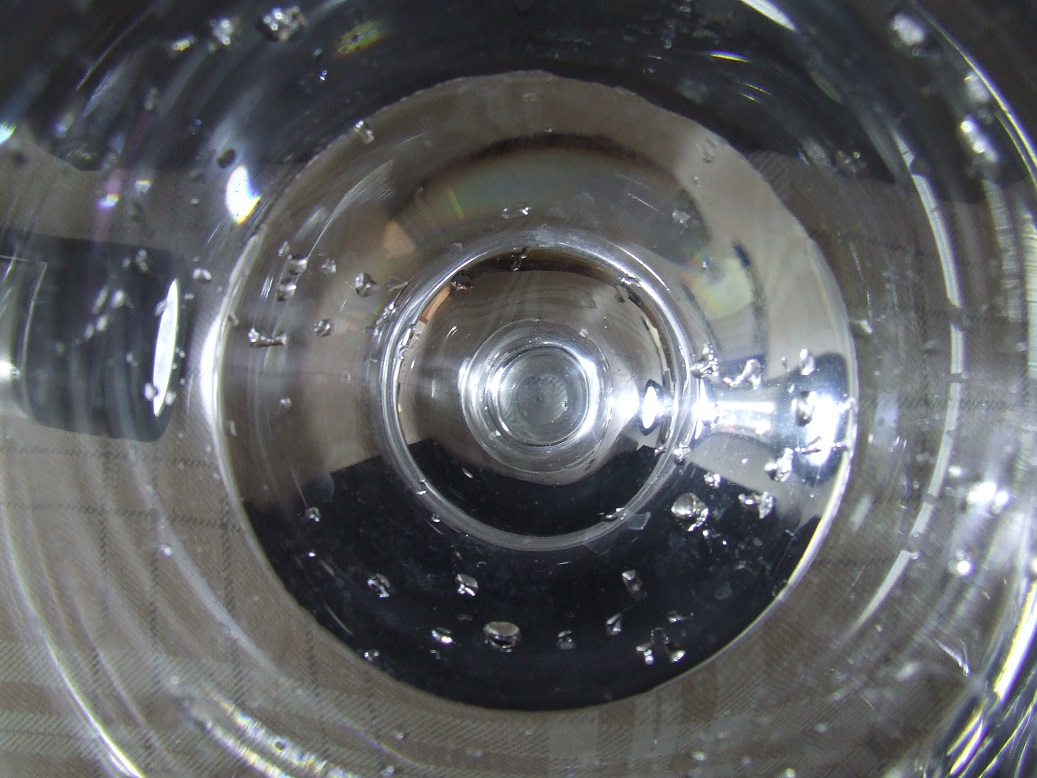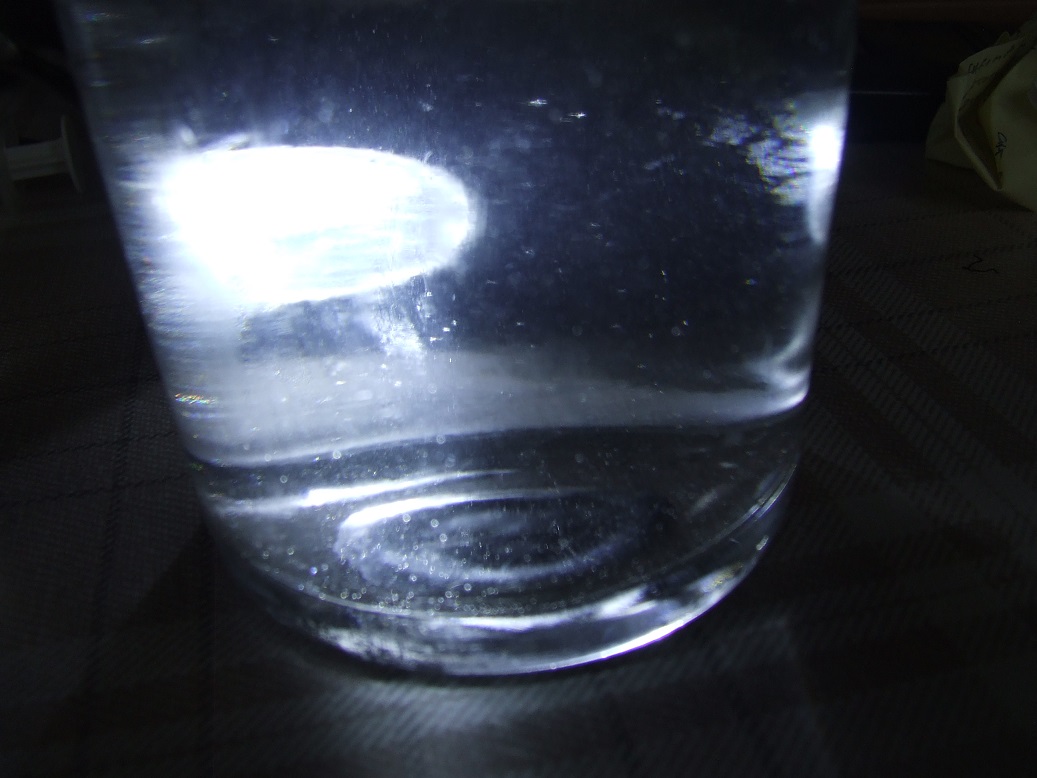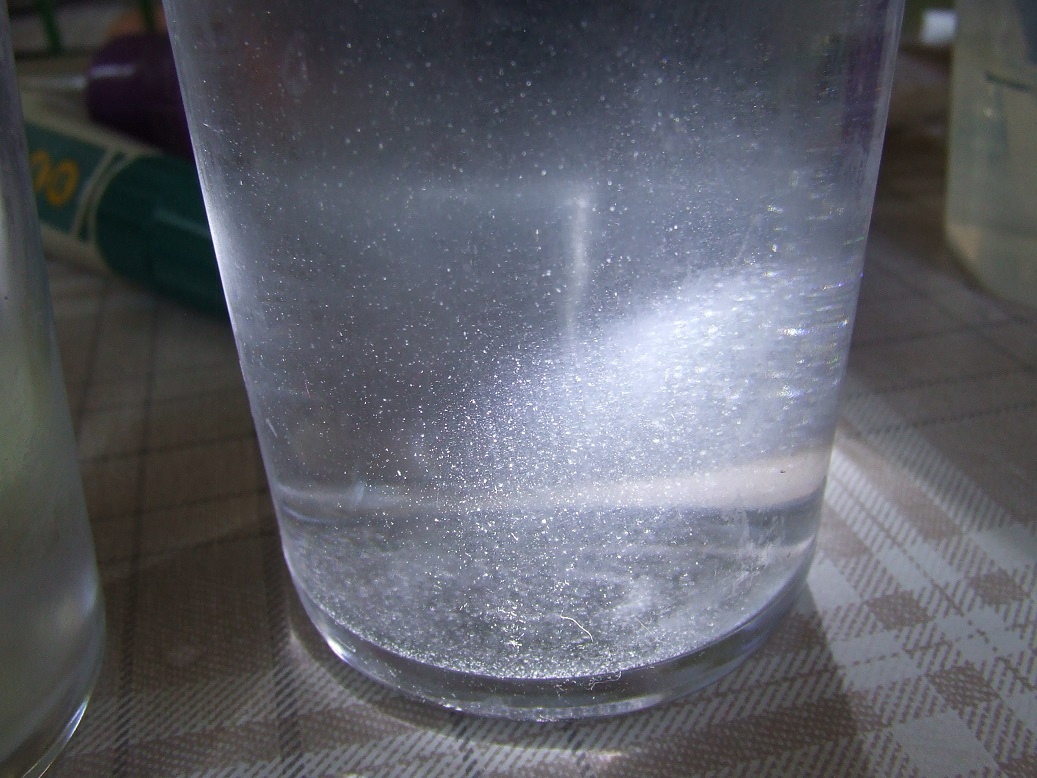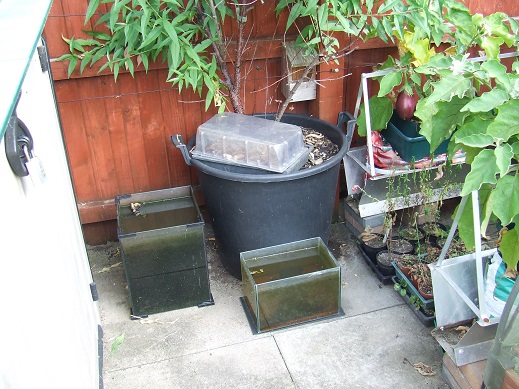I took all the Heath-Robinson plumbing out of the barrel and let it settle for a couple of hours. Couple of pics of the glass test ...


It's pretty much all dissolved after 3 days of constant stirring. Conductivity was 305uS, pH was 7.07 and temp 29.4C (hotter than ambient because of the pump's heat I expect?).
So if I needed to prepare a big batch of change-water I could use this method. I should buy some proper hose, I guess!
The milk carton came out of the freezer, defrosted with more shaking and poured sequentially into the four pint glasses. Here's the fourth glass ...

Conductivity in the glass was 538uS, pH was 6.31 and temp was 19.5C
If anything it's a better solution than the barrel managed - it's close enough for jazz and I'm going to call it a win! The milk carton has now reached ambient temperature and all looks good.
I should be able to get 1.2g dissolved if I increase the volume to 3L. I can't really go any bigger than a 6-pint milk carton else Mrs. V! would go ballistic. Mind you ... earlier there was the most astonishing rain storm. In fact so intense was it that Mrs. V! took the opportunity to have a shower in her undergarments* ; I took a photo. It's now my desktop wallpaper, but I'm not averse to a little blackmail every now and then.
Anyway if my maths is unusually correct, a 3L milk carton of calcium sulphate solution will allow me a 15.7% water-change in the 68.4L that Sheba 4 holds. The procedure looks like this ...
Three days before a water-change is anticipated, fill the milk carton with 3L of RO/DI and add 1.2g calcium sulphate powder. Put in freezer. Try to remember to shake it up every so often. At the same time put 7.8L of RO/DI into a barrel (I might try to buy one of a more convenient size) and add : 2.07g of sodium bicarbonate ; 1.2g of magnesium sulphate ; and 0.08g of potassium chloride. Remember to shake that, too! Then on the day of the change, pour the contents of the milk carton into the barrel.
I think I can live with that, just about.
And I think that probably wraps up the thread!
* I use the plural out of a sense of decorum, you understand.










